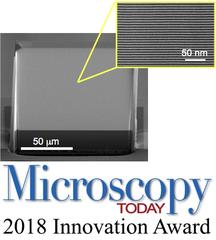URL: https://www.desy.de/news/news_search/index_eng.html
Breadcrumb Navigation
DESY News: Microscopy Today Innovation Award for novel X-ray lenses
News
News from the DESY research centre
Microscopy Today Innovation Award for novel X-ray lenses
For a novel X-ray lens with unprecedented properties, a research team headed by DESY group leader Saša Bajt has been awarded the 'Microscopy Today Innovation Award' by the magazine Microscopy Today. The team's “High numerical aperture, high efficiency X-ray lenses” were judged as one of the ten best microscopy innovations in the 2018 competition, and the prize was awarded on Wednesday during the Microscopy & Microanalysis 2018 meeting in Baltimore (USA). Microscopy Today is the official magazine of the Microscopy Society of America (MSA). Team members are Saša Bajt (DESY), Andrzej Andrejczuk (University of Bialystok, Poland), Sabrina Bolmer (DESY), Henry Chapman (DESY and University of Hamburg), Andrew Morgan (DESY), and Mauro Prasciolu (DESY).

DESY group leader Saša Bajt.

The scientists made several innovations in the fabrication process to achieve high efficiency and to extend the numerical aperture (NA) far beyond what was previously possible, to enable imaging at spatial resolutions below 10 nanometres, with diffraction efficiencies exceeding 80 per cent. The new lenses consist of over 10 000 alternating layers of a new material combination, tungsten carbide and silicon carbide. To focus an X-ray beam in the vertical and horizontal directions it has to pass through two perpendicularly oriented lenses. By using this set-up, a spot size of 8.4 nanometres by 6.8 nanometres was demonstrated. The resolution of the new lenses is about five times better than achievable with typical state-of-the-art lenses.
Reference:
2018 Microscopy Today Innovation Awards; Microscopy Today; DOI: 10.1017/S1551929518000822



